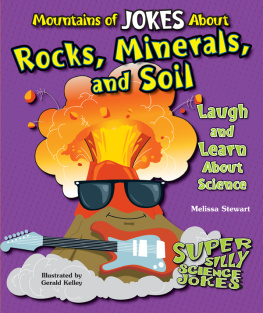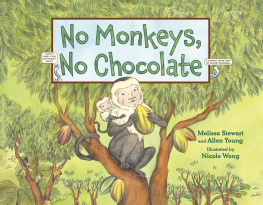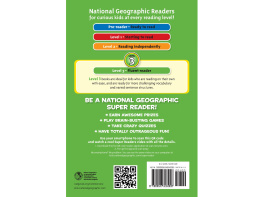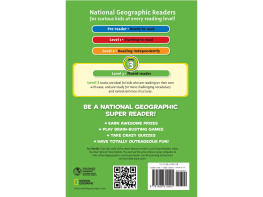WHAT DO YOU GET WHEN TWO DINOSAURS CRASH?
A TYRANNOSAURUS WRECK.
Who said science cant be funny?! Read some fascinating science facts about prehistoric life, including fossils, sauropods, and pterosaurs. Then learn some seriously silly jokes! And the fun part? A section of the book teaches you to write your own jokes about early life on our planet! Get ready to laugh and learn about science.
This series will tickle your funny bone as you learn about all sorts of science as well as get pointers about writing jokes of your own.
Helen Hess, PhD, Series Science Consultant
Professor of Biology
College of the Atlantic
Bar Harbor, Maine
Not only will these books reveal interesting facts and fascinating information, they will actually make readers chuckle!
Allan A. De Fina, PhD, Series Literacy Consultant
Dean, College of Education
Professor of Literacy Education
New Jersey City University
Past President of the New Jersey
Reading Association
About the Author
Trained as both a scientist and journalist, Melissa Stewart is the award-winning author of more than 100 books for young readers. While gathering information for her books, Melissa has explored tropical forests in Costa Rica, gone on safari in Kenya and Tanzania, and swum with sea lions in the Galpagos Islands.
We cant jump into a time machine and travel back to the past. But that doesnt mean well never know what Earth was like long, long ago.
For the last 5,000 years, people have kept written records. They tell us a lot about how the world has changed during that time. But life on Earth dates back almost 4 billion years. How do we know what our planet was like way back then? Fossils tell us.
As you read this book, youll learn all kinds of cool facts about the history of life on Earth. But thats not all. This book is also chock-full of jokes. Some of them will make you laugh out loud. Others might make you groan. (Sorry.) But either way, youll have a good time. So lets get started!

Image Credit: Shutterstock.com

Image Credit: 2011 Gerald Kelley (www.geraldkelley.com)
Q: What happens when a dinosaur dies angry?
A: It becomes a hostile fossil.
No one knows exactly how life began on our planet. But we do know it started off small. Really small. Single-cell, you-need-a-microscope-to-see-it small.
For nearly 2 billion years, bacteria ruled the world. They were the only life around. Some bacteria took in nutrients from the water in which they lived. Others used sunlight to make their own food. Each bacterium grew and grew and grew until finally, it split in two.
Some bacteria can divide every twenty minutes. That means one bacterium can produce more than 500 bacteria in just three hours. Yowzah!
About 2 billion years ago, some kinds of bacteria began joining together to form more complex creatures. Over time, they evolved into all the plants, animals, and fungi alive today.

Image Credit: Professor Nicholas J. Russell
Q: Why did the bacteria cross the microscope?
A: To get to the other slide.
Q: Why do bacteria like fourth-grade math?
A: They love to spend their time dividing.
Most scientists think the worlds first animals lived about 600 million years ago. These early invertebrates had thin, flat bodies. They probably spent most of their time floating on the surface of the sea.
By 500 million years ago, Earths oceans were teeming with life. As Odaraia swam upside down through the watery world, Pikaia worms darted in and out of bowl-shaped sponges. Below them, trilobites scampered along the seafloor, and penny-sized Marrella dug in the mud for clam-like critters.
Believe it or not, all the animals alive todayincluding youdeveloped from creatures that lived in the ancient oceans.

Image Credit: 2011 Photos.com

Image Credit: 2011 Gerald Kelley (www.geraldkelley.com)
Q: What did the trilobite yell when it got stuck in the seaweed?
A: Kelp! Kelp!
Q: Why was the Pikaia worm so happy to live 500 million years ago?
A: Because early birds didnt exist yet.
By 470 million years ago, an important new group of animals had come onto the scene: fish.
The first fish had tiny mouths and no teeth at all. They didnt have scales. Bony plates covered their bodies.
But as time passed, fish developed fins, and jaws with teeth. They could swim easily, and they ate all kinds of foods.
It didnt take long for these fish to spread to watery habitats all over the world.
Around 400 million years ago, some fish developed bony skeletons inside their bodies. These early vertebrates were our ancient ancestors. And their direct descendantsfrom trout to tunaswim in lakes, rivers, and oceans around the world.

Image Credit: Jaime Chirinos
Q: Why was it hard to weigh ancient fish?
A: They didnt have scales.
Q: Why does a scientist measure fish fossils in inches?
A: Because fish dont have feet.
While fish were developing in the salty seas, other ancient creatures were moving onto land. Who led the charge? Bacteria, of course.
Because bacteria divide and change quickly, they had no trouble evolving to survive in dry, rocky places. By 450 million years ago, plants and fungi were living together on land. The plants could make food from sunlight. And the fungi could absorb, or take in, minerals from rock. Together, plants and fungi made a great team.
Once plants had spread across the land, it was time for animals to make their move. First came creatures related to todays millipedes. They were soon followed by the ancestors of todays spiders, scorpions, and insects.

Image Credit: colorization by Jessica Wilson

Image Credit: 2011 Gerald Kelley (www.geraldkelley.com)
Q: What did the early plant whisper to its neighbor?
A: Theres a fungus among us.
Q: What did Earth say to the Sun 450 million years ago?


























